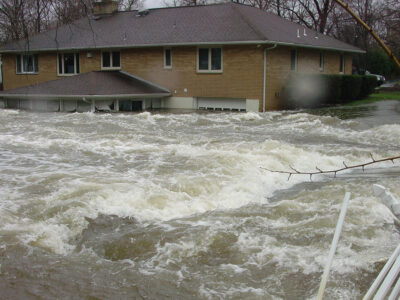The Columbia Climate School’s National Center for Disaster Preparedness released a report this week exploring disaster resilience legislation during the 2021-2022 state legislative sessions.
Exacerbated by climate change, disaster seasons of the last few years have broken records and cost governments billions in response and recovery costs. The US has sustained 14 “billion-dollar disasters” over the past decade, with the last five years amounting to $788 billion. While the federal government continues to fund disaster resilience efforts, it is widely understood that FEMA alone cannot make survivors financially “whole.” As federal policy leaders prioritize disaster investments, they have also implored states to engage further.
The new report seeks to provide a greater understanding of disaster resilience-related legislative activity at the state level. The aim is to provide additional insights into state-level efforts and regional dynamics, and ultimately offer a better understanding of the strengths and gaps in legislative efforts to build resilience.

Though the vast majority of states displayed some level of legislative activity in this area, the number and disaster topic area of these bills varied greatly from state to state. While 42 states enacted a sizable 211 bills related to disaster resilience, 18 states passed only one or two bills, and seven states passed none. Legislative action in California, Colorado, Hawaii, and New Jersey alone made up a third of the bills passed.
The report sorts legislation into 12 categories, modeled off of FEMA’s Community Lifelines, and considers only enacted bills. The categories include funding, energy, communications, transportation, safety and security, health and medical, food and water, housing, hazardous materials, land use, governance, and equity. Several of the categories also contain subcategories. For example, funding includes subcategories for assistance to individuals and households, assistance to private and nonprofit sectors, assistance to local governments, federally related spending, and cost-share insurance.

Results showed that states enacted a range of resilience solutions in 2022. The most significant share of enacted bills related to funding and governance (i.e., emergency management reform), followed by land use, communications, and safety and security.
Nearly three-quarters of states enacted 107 bills appropriating funds for state and local disaster resilience programs and projects. These bills assist individuals and households, private and nonprofit sector entities, local governments, and state government programs, or leverage federal dollars — such as certain types of FEMA funding (or designating a state match), the American Rescue Plan Act (ARPA), and Safeguarding Tomorrow through Ongoing Risk Mitigation (STORM) Act — on the state level.
At least 93 bills were related to critical infrastructure, such as improving the resilience of state highways, the energy grid, building codes, and emergency communications. At least 88 bills were related to health and human services — protecting communities’ environmental health and access to food, water, and mass care services despite hazard risk. At least 104 bills related to governance — enacting broad state administrative changes, reforming or establishing new government authorities, reporting requirements, intergovernmental coordination, and transparency. At least 31 bills related to equity — aiming to ensure that disaster resilience efforts are realized equitably across minority, low-income, elderly, gender, LGBTQ+, and rural populations.

Several states did not meet this year or have yet to officially conclude their sessions, and different states face drastically different hazard threats and frequencies, so the volume of legislative activity may not directly correlate to quality, and the impact of legislation is worthy of separate analyses.
As the impacts of climate change are increasingly linked to disasters, it will be critical to monitor and understand how state legislation progresses along the way.




Congratulations on releasing your report exploring disaster resilience legislation during the 2021-2022 state legislative sessions. I found the topic to be incredibly interesting, and I am sure that many others will as well. I was wondering if you plan to release the data from your report publicly so that others can access and learn from it. It would be great if you could share your findings with the broader community. Thank you again for your work on this important topic.